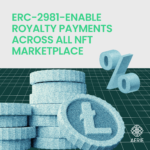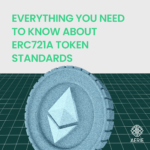ETHEREUM
NEST® GLOSSARY
Ethereum, with the network and currency referred to as ETH, is the second-biggest cryptocurrency by market cap, after Bitcoin. It is additionally a decentralized computing system that can run a wide range of applications – covering almost the whole world of DeFi. Ethereum launched in 2015 and is today the second-biggest cryptocurrency by market cap, after Bitcoin. Yet unlike Bitcoin, it had not been produced to be digital money. Rather, ETH’s creators set out to build a brand-new kind of worldwide, decentralized computer platform (distributed ledger technology or DLT), that takes the safety and security and also openness of existing blockchain solutions yet also extends such capacities to a substantial variety of existing as well as forthcoming applications.
A range of services and applications, from monetary devices and games to intricate data sources, are currently operating on the Ethereum blockchain. As the not-for-profit portion, the Ethereum organization puts it: “Ethereum can be made use of to codify, decentralize, safeguard and also trade nearly anything.” ETH has come to be a prominent financial investment and functional utility in the DLT space. Further it also can be used, like Bitcoin, to send or receive value without an intermediary. In fact, the majority of ERC20 coins and alt-coins are on the ETH network.
The Ethereum blockchain permits developers to construct as well as run a massive variety of applications: whatever from video games as well as progressed databases to intricate decentralized economic tools – showing that they along with a wide scope of industries don’t require a bank or any other organizational middle-men for various operations. Ethereum-based apps are usually considered L2 or ‘layer two’ applications, as they utilize the ETH network which itself is the underlying L1 or ‘layer one’ solution. Most applications using Ethereum have been developed around “smart contracts.” These kind of automated agreements, like traditional bank-transfer orders (wires) and/or normal paper contracts, are what set the terms of any given or entered arrangement, this time between two independent collaborators. Yet unlike an traditional wire-transfers or contractual agreements, these blockchain powered smart contracts have the potential to instantly implement the terms and conditions, when such triggers or events specified therein are fulfilled. Meaning the event or digital exchange can instantly transpire, without the requirement for either participant nor any intermediary to facilitate such.
Ethereum, like Bitcoin, is an open-source construct. It is not owned, operated or maintained by a single person nor by any one organization. Essentially, absolutely anyone with an internet connection can run access the ETH network and, should there be sufficient processing power or capacity, also be able to run an ETH blockchain ‘node’ or portion of the network – thereby contributing to both the current as well as ongoing ETH operations. Much like Bitcoin’s decentralized blockchain which allows participants, from basically anywhere in the world, to send or get funds (i.e. Bitcoin), without a bank facilitating such – ETH and smart contracts working on Ethereum’s decentralized blockchain enable developers to develop complex applications that run precisely as configured, without or absent any third-party interference.









